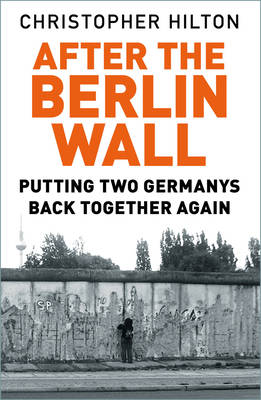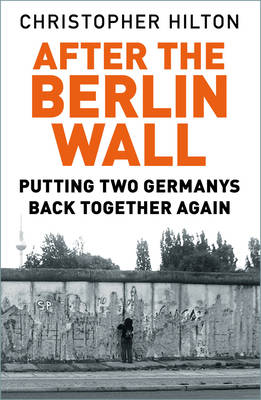
Bedankt voor het vertrouwen het afgelopen jaar! Om jou te bedanken bieden we GRATIS verzending (in België) aan op alles gedurende de hele maand januari.
- Afhalen na 1 uur in een winkel met voorraad
- In januari gratis thuislevering in België
- Ruim aanbod met 7 miljoen producten
Bedankt voor het vertrouwen het afgelopen jaar! Om jou te bedanken bieden we GRATIS verzending (in België) aan op alles gedurende de hele maand januari.
- Afhalen na 1 uur in een winkel met voorraad
- In januari gratis thuislevering in België
- Ruim aanbod met 7 miljoen producten
Zoeken
After the Berlin Wall
Putting Two Germanys Back Together Again
Christopher Hilton
Paperback | Engels
€ 18,45
+ 36 punten
Omschrijving
THE BERLIN WALL, one of the most powerful and enduring symbols of the Cold War, fell on 9 November1989. It would be another year before East and West Germany were officially reunified, but on this momentous day Germans from both sides flocked to the wall in celebration. Once the euphoria had died down, the unimaginable task of putting East and West back together began. For almost three decades the country and its capital had been divided between France, the UK and the USA in the west and the USSR in the east. How did one go about marrying a totalitarian, atheist, communist system with a democratic, Christian one? And how did this marriage affect the everyday life of ordinary Germans? There had been no warning of this marriage and no preparation for it - and no country had ever tried putting two completely opposite systems together before. This is the story of what happened, in the words of the people it happened to: the story of an incredible unification.
Specificaties
Betrokkenen
- Auteur(s):
- Uitgeverij:
Inhoud
- Aantal bladzijden:
- 320
- Taal:
- Engels
Eigenschappen
- Productcode (EAN):
- 9780750992138
- Verschijningsdatum:
- 23/08/2019
- Uitvoering:
- Paperback
- Formaat:
- Trade paperback (VS)
- Afmetingen:
- 130 mm x 196 mm
- Gewicht:
- 362 g

Alleen bij Standaard Boekhandel
+ 36 punten op je klantenkaart van Standaard Boekhandel
Beoordelingen
We publiceren alleen reviews die voldoen aan de voorwaarden voor reviews. Bekijk onze voorwaarden voor reviews.









